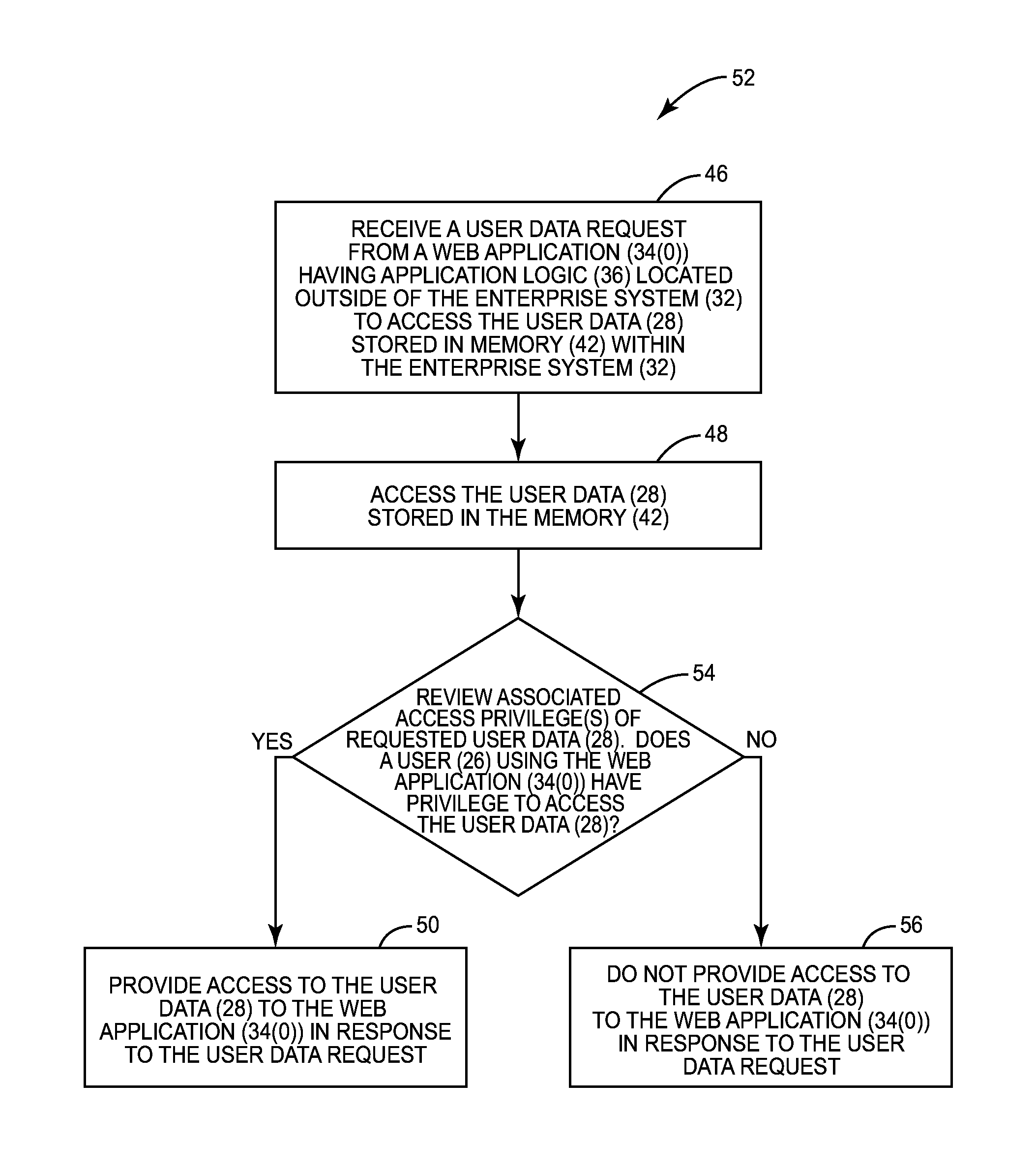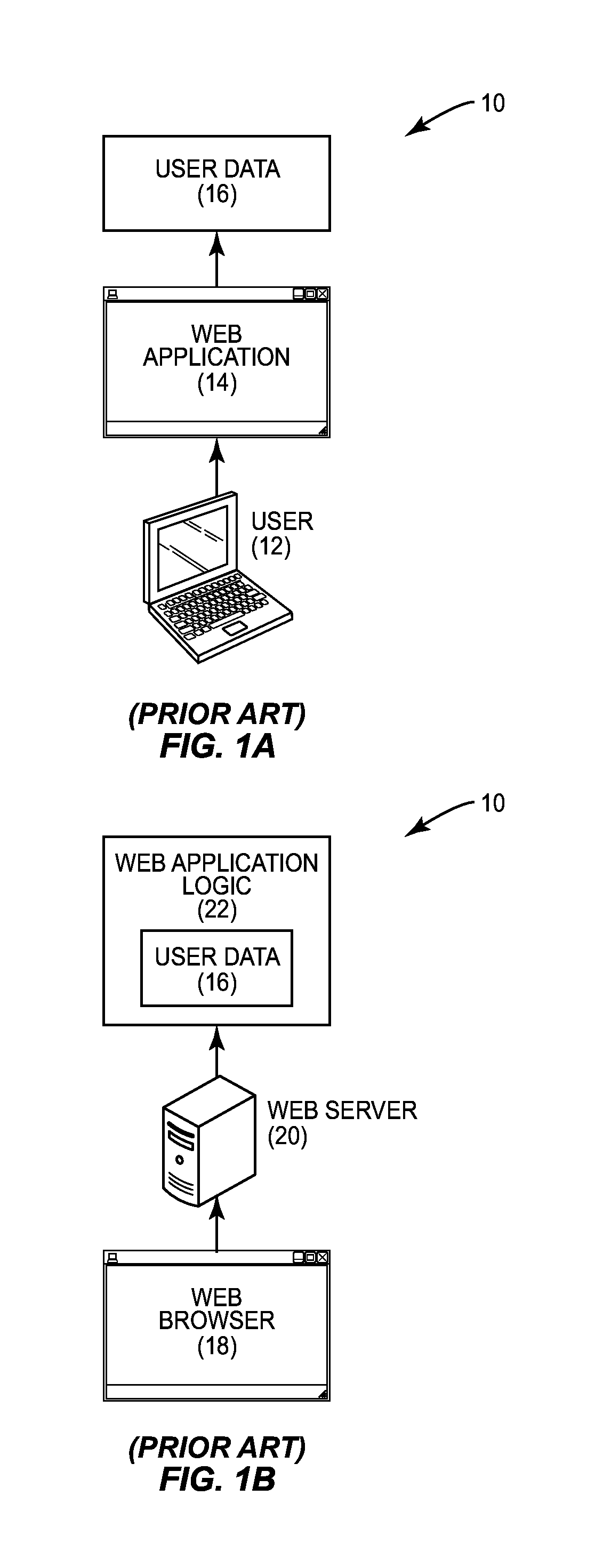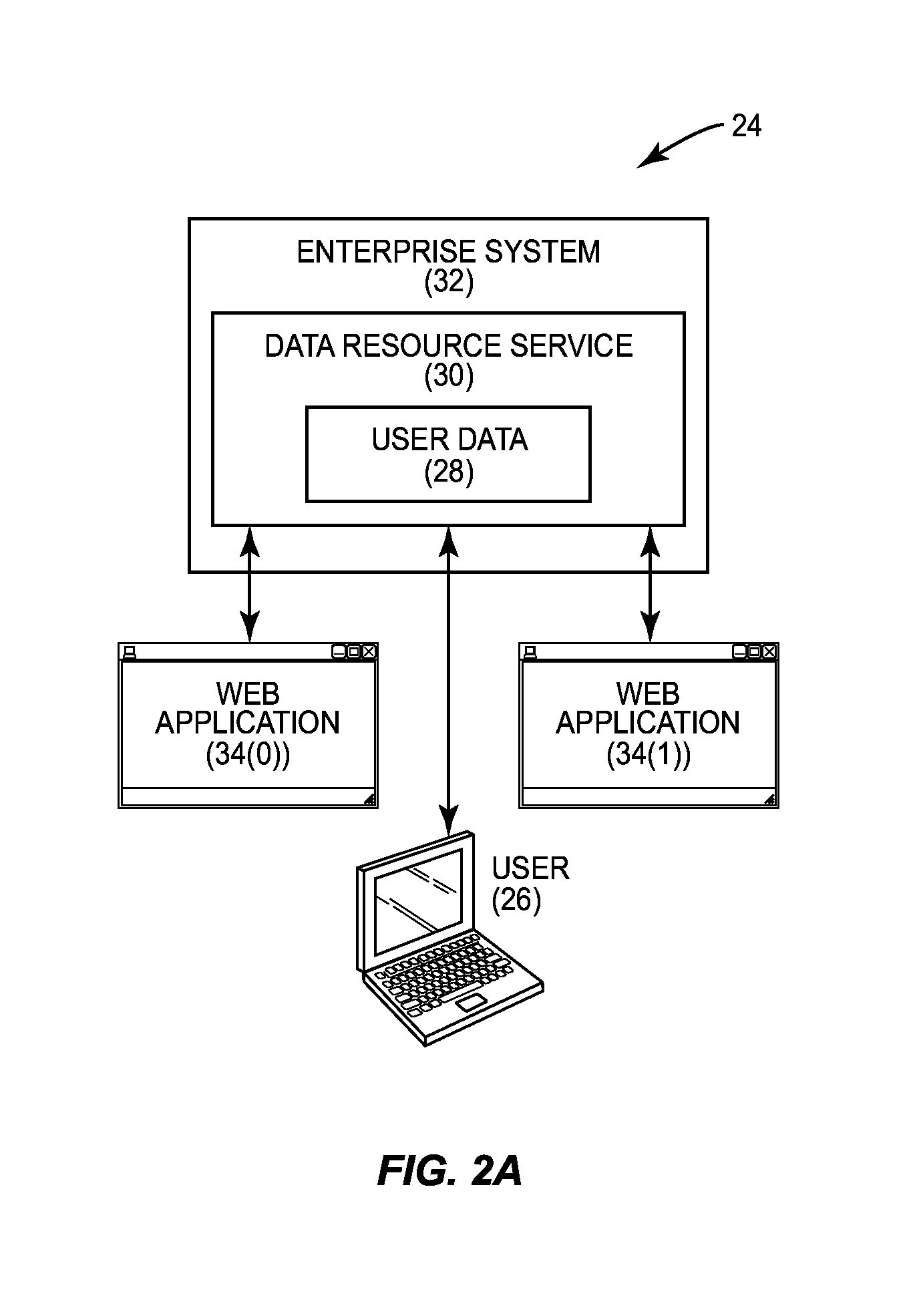Providing data resource services within enterprise systems for resource level sharing among multiple applications, and related methods, systems, and computer-readable media
a data resource and enterprise system technology, applied in the field of data accessibility within enterprise systems, can solve problems such as rigid data boundaries, application from sharing users, and creation of redundant instances of user data across multiple web applications
- Summary
- Abstract
- Description
- Claims
- Application Information
AI Technical Summary
Benefits of technology
Problems solved by technology
Method used
Image
Examples
Embodiment Construction
[0031]With reference now to the drawing figures, several exemplary embodiments of the present disclosure are described. The word “exemplary” is used herein to mean “serving as an example, instance, or illustration.” Any embodiment described herein as “exemplary” is not necessarily to be construed as preferred or advantageous over other embodiments.
[0032]Embodiments disclosed herein include providing data resource services within enterprise systems for resource level sharing among multiple applications. Related methods, systems, and computer-readable media are also disclosed. In embodiments disclosed herein, data resource services are provided within an enterprise system to allow user data to be separated from application logic that accesses the user data. A data resource service is a service that stores user data as hierarchical resources (also referred to herein as “data resources”) identified by paths or Uniform Resource Locators (URLs) on a server, or another storage medium. The ...
PUM
 Login to View More
Login to View More Abstract
Description
Claims
Application Information
 Login to View More
Login to View More - R&D
- Intellectual Property
- Life Sciences
- Materials
- Tech Scout
- Unparalleled Data Quality
- Higher Quality Content
- 60% Fewer Hallucinations
Browse by: Latest US Patents, China's latest patents, Technical Efficacy Thesaurus, Application Domain, Technology Topic, Popular Technical Reports.
© 2025 PatSnap. All rights reserved.Legal|Privacy policy|Modern Slavery Act Transparency Statement|Sitemap|About US| Contact US: help@patsnap.com



